Topics - e-Bulletin
University of Electro-Communications publishes December 2014 issue of e-Bulletin
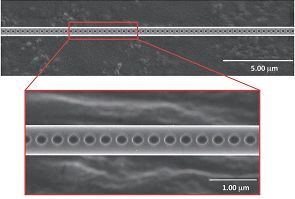
The December 2014 issue of the University of Electro-Communications e-Bulletin includes research highlights on nanofibers for the quantum internet; to magnetic vortices; propulsion of a soft robotic fish; brain-training for baseball robots; heating in electric circuits; eyes on the sky; the FoodCam; and the ultimate automatic door system.
Feature article
Innovative nanophotonics: Integrating quantum light sources with nanofibers for quantum internet applications

http://www.ru.uec.ac.jp/e-bulletin/feature/2014/innovative-nanophotonics.html
"I had the idea for 'nanofiber quantum photonics' about 14 years ago," says Kohzo Hakuta, Director of the Center for Photonic Innovations at the University of Electro-Communications (UEC). "I want to integrate quantum light sources e.g. single quantum dot / single atom, into specially designed nanofibers. This 'fiber in-line technology' holds the potential to revolutionize distributed quantum networks for secure, ultra-high speed communication. Namely, the birth of the 'quantum internet. We are supported by Japan Science and Technology Agency through Strategic Innovation Program."
Research Highlights
Next generation mobile communications: World's first successful use of an electric circuit to compensate for distortions in electric signals due to heat
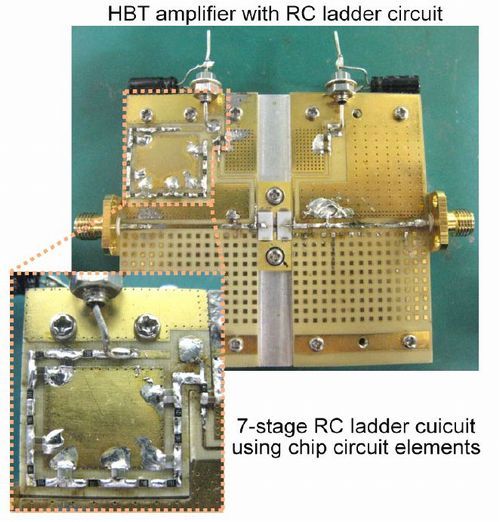
As circuits become smaller and more densely populated with circuit elements, electrical characteristics of the components become more prone to the influence of the heat generated. "The interaction between thermal and electrical phenomena is one of the most troublesome problems in analog and digital integrated circuits," explain Ryo Ishikawa, Junichi Kimura and Kazuhiko Honjo from the University of Electro-communications in Chofu-shi, Japan.
Magnetic vortices: Controlling core switching in Pac-man disks
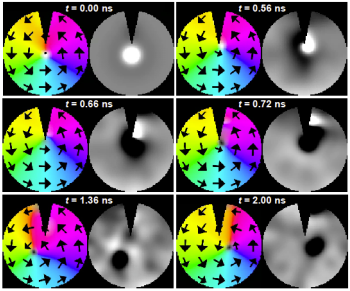
Magnetic vortices in thin films can encode information in the perpendicular magnetization pointing up or down relative to the vortex core. These binary states could be useful for non-volatile data storage devices such as RAM memories, but the switching between them must be fast and energy-efficient. However, despite many efforts switching is still slow and requires very large currents. Pac-man disks, whose shape resembles the retro arcade game, seem to be a promising approach and Yoshinobu Nakatani and co-workers from the University of Electro-Communications now show a more efficient way of controlling switching in these devices.
Underwater robotics: Analyzing the propulsion of a soft robotic fish
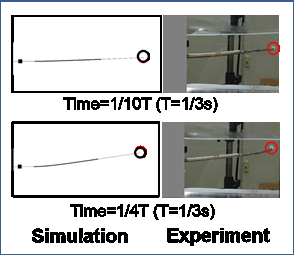
In the world of underwater robotics, fish-like structures are able to accelerate and maneuver better than most other artificial underwater vehicles. For these reasons, fish-like robots are well suited for submarine exploration tasks. However, a complete understanding of mechanisms governing the swimming movements of fish-like robots remains elusive, limiting the performance of such underwater robot.
Artificial intelligence: Brain-training for baseball robot
http://www.ru.uec.ac.jp/e-bulletin/research-highlights/2014/brain-training-for-baseball-robot.html
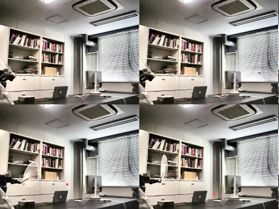
The human brain continually monitors and influences all bodily movements, helping the body adapt to different circumstances in order to maintain fine motor control. The part of the brain responsible for fine motor control, including precision co-ordination and accurate timing, is called the cerebellum. In the field of robotics, developing an artificial cerebellum capable of 'teaching' a robot to move with accurate timing is a key goal.
News and Events
Second Moscow Institute of Physics and Technology - University of Electro-Communications (MIPT-UEC) Joint Workshop on Optical Science
The 2nd Global Alliance Lab between Tamkang University and University of Electro-Communications
http://www.ru.uec.ac.jp/e-bulletin/news/2014/the-2nd-global-alliance-lab-tku-uec.html
Topics
Eyes on the sky: Monitoring effects of solar activity on aurora and global positioning systems
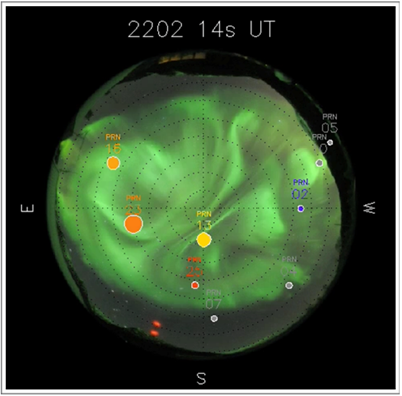
Keisuke Hosokawa is a geophysicist conducting research on the dynamics of the ionosphere. "I am interested in a wide range of topics in space physics," explains Hosokawa. "Recently, I have been monitoring the effects of fluctuations in the ionosphere on global positioning systems (GPS). Solar winds affect GPS systems, and could potentially cause chaos with aviation navigation systems. So it's an important area of research in space physics."
The FoodCam: Smart phone application for real time food recognition for personalized healthcare
The ubiquitous smart phone is becoming more than just a device for communicating and internet browsing. Increasingly, innovators are developing 'apps' for health and medical care such as monitoring blood pressure.
Intelligent robotics: The ultimate automatic door system
http://www.ru.uec.ac.jp/e-bulletin/topics/2014/the-ultimate-automatic-door-system.html
Tetsuo Tomizawa is an assistant professor at the Department of Human Media Systems at Graduate School of Information Systems, University of Electro-Communications (UEC). "I spent my graduate school days developing 'town-robotic systems' that fit seamlessly into the real word to support humans in their daily lives," says Tomizawa. "Examples include a remote book browsing system to enable people to control a robot in a library to select a book and then transmit images of the contents via a camera. The robot turns the pages as instructed. A virtual version of a genuine library in the comfort of your own home."
Letter From Alumni
http://www.ru.uec.ac.jp/e-bulletin/topics/2014/letter-from-alumni-4.html
Pokpong Songmuang Lecturer at Department of Computer Science, Faculty of Science and Technology, Thammasat University (TU), Pathumthani, Thailand
Further information
International Public Relations
The University of Electro-Communications
1-5-1 Chofugaoka, Chofu, Tokyo 182-8585
- E-mail :

- Website :
- http://www.uec.ac.jp/eng/
About The University of Electro-Communications
The University of Electro-Communications (UEC) in Tokyo is a small, luminous university at the forefront of applied sciences, engineering, and technology research. Its roots go back to the Technical Institute for Wireless Commutations, which was established in 1918 by the Wireless Association to train so-called wireless engineers in maritime communications in response to the Titanic disaster in 1912. In 1949, the UEC was established as a national university by the Japanese Ministry of Education, and moved in 1957 from Meguro to its current Chofu campus Tokyo.
With approximately 4,000 students and 350 faculty, UEC is regarded as a small university, but with particular expertise in wireless communications, laser science, robotics, informatics, and material science, to name just a few areas of research.
The UEC was selected for the Ministry of Education, Culture, Sports, Science and Technology (MEXT) Program for Promoting the Enhancement of Research Universities as a result of its strengths in three main areas: optics and photonics research, where we are number one for the number of joint publications with foreign researchers; wireless communications, which reflects our roots; and materials-based research, particularly on fuel cells.
- Website :
- http://www.uec.ac.jp/eng/

